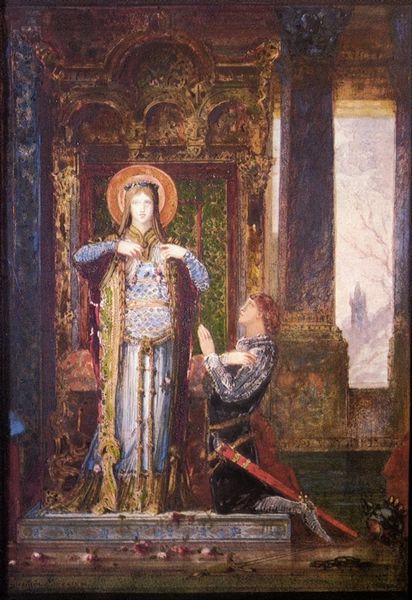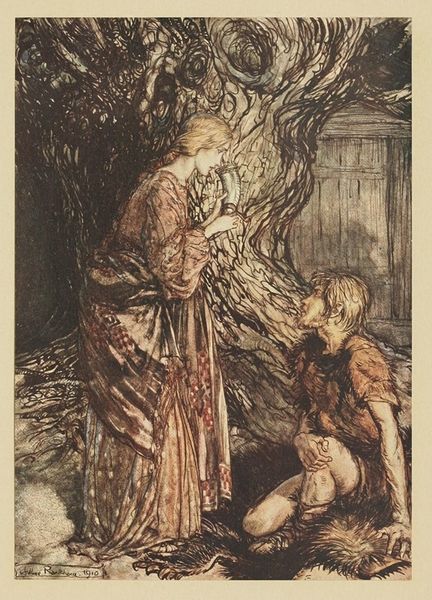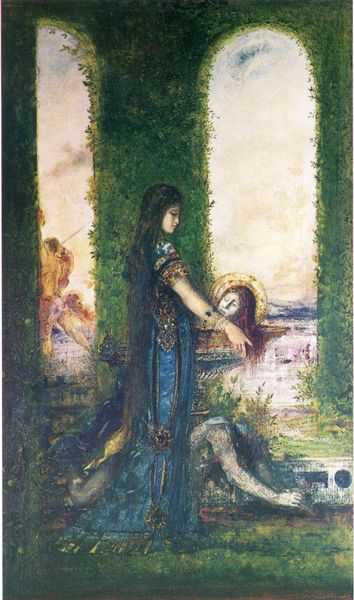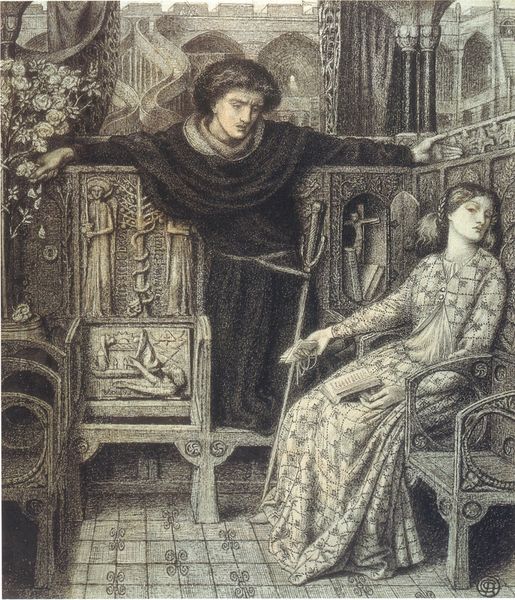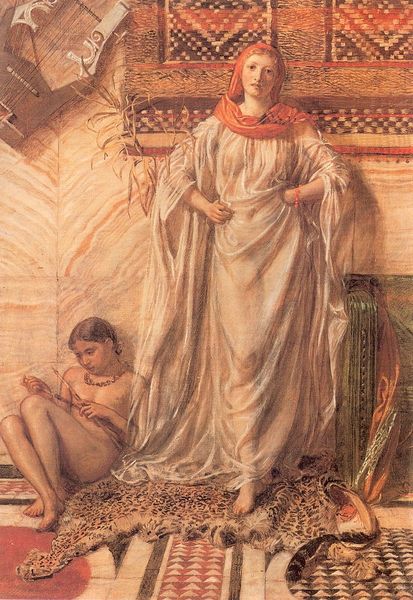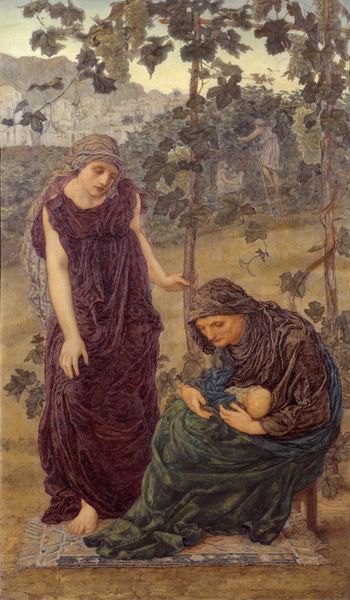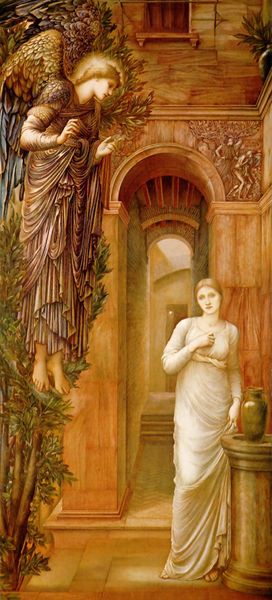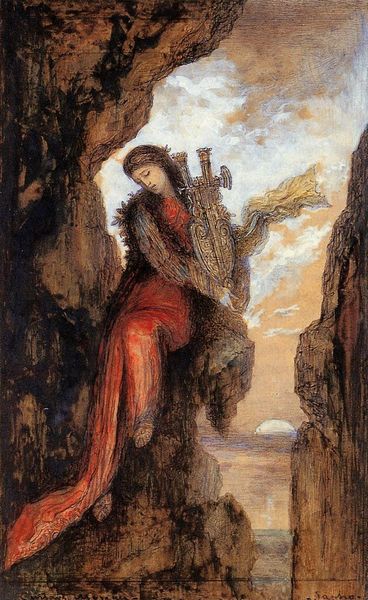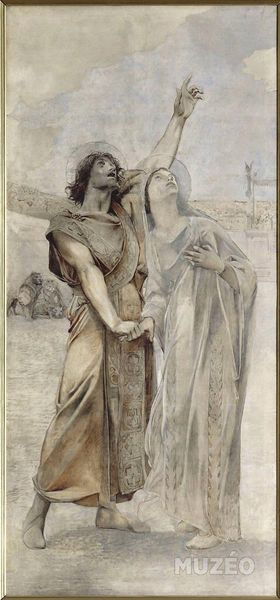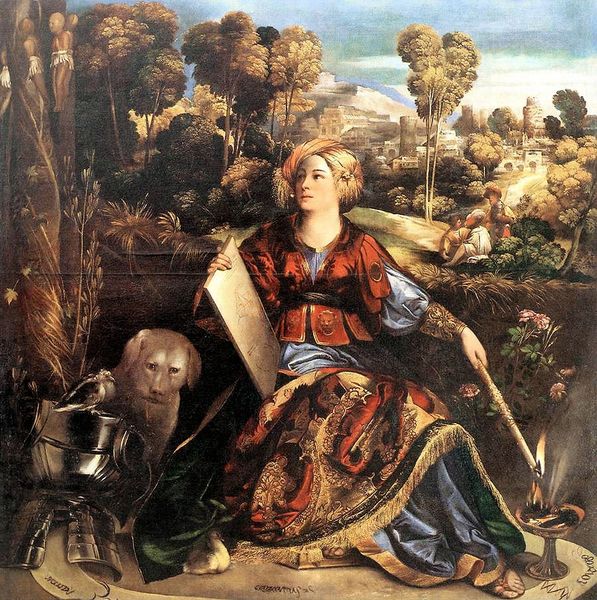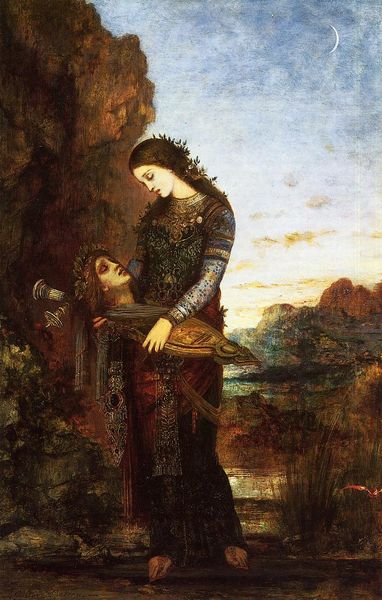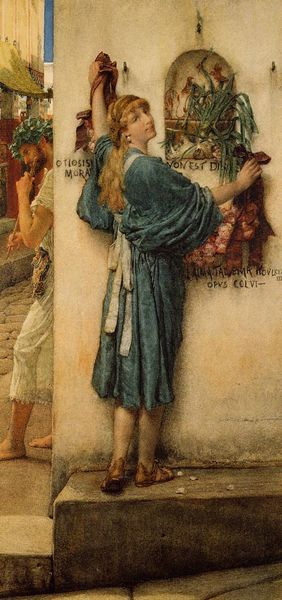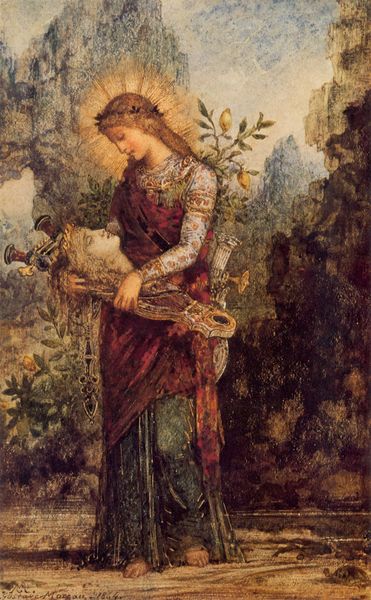
Copyright: Public domain
Gustave Moreau painted "The Poet and the Saint", around 1890, though the exact date remains unknown. This artwork presents a compelling dialogue between earthly and divine realms, a theme that resonates with the social and spiritual anxieties of 19th-century France. Moreau’s choice of subject matter and his delicate, detailed style reflect the Symbolist movement's turn away from the industrial present and towards a more mystical, imaginative world. The poet, kneeling with his lyre, represents artistic inspiration and earthly pursuits, while the saint, adorned with a halo, embodies spiritual purity. The image reflects a society grappling with questions of faith and secularism, the rise of modernity and the longing for transcendent experiences. Moreau, an influential figure in the French art scene, subtly critiques the materialist values of his time by elevating spiritual and artistic ideals. The historian seeking to understand this painting might consult sources on the Symbolist movement, 19th-century French social history, and Moreau's personal writings. The meaning of art resides in these complex interactions between social context, institutional forces, and artistic vision.
Comments
No comments
Be the first to comment and join the conversation on the ultimate creative platform.
